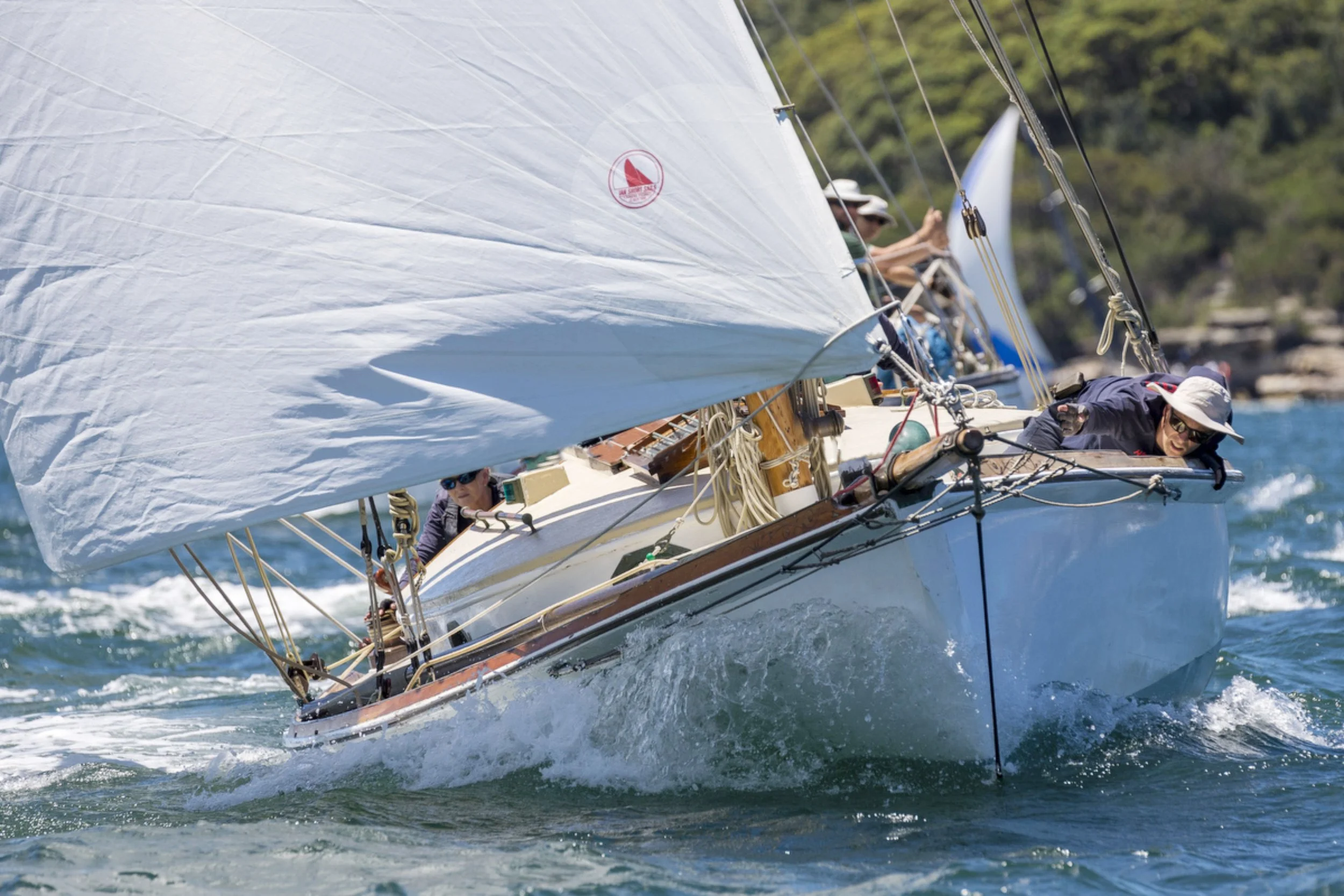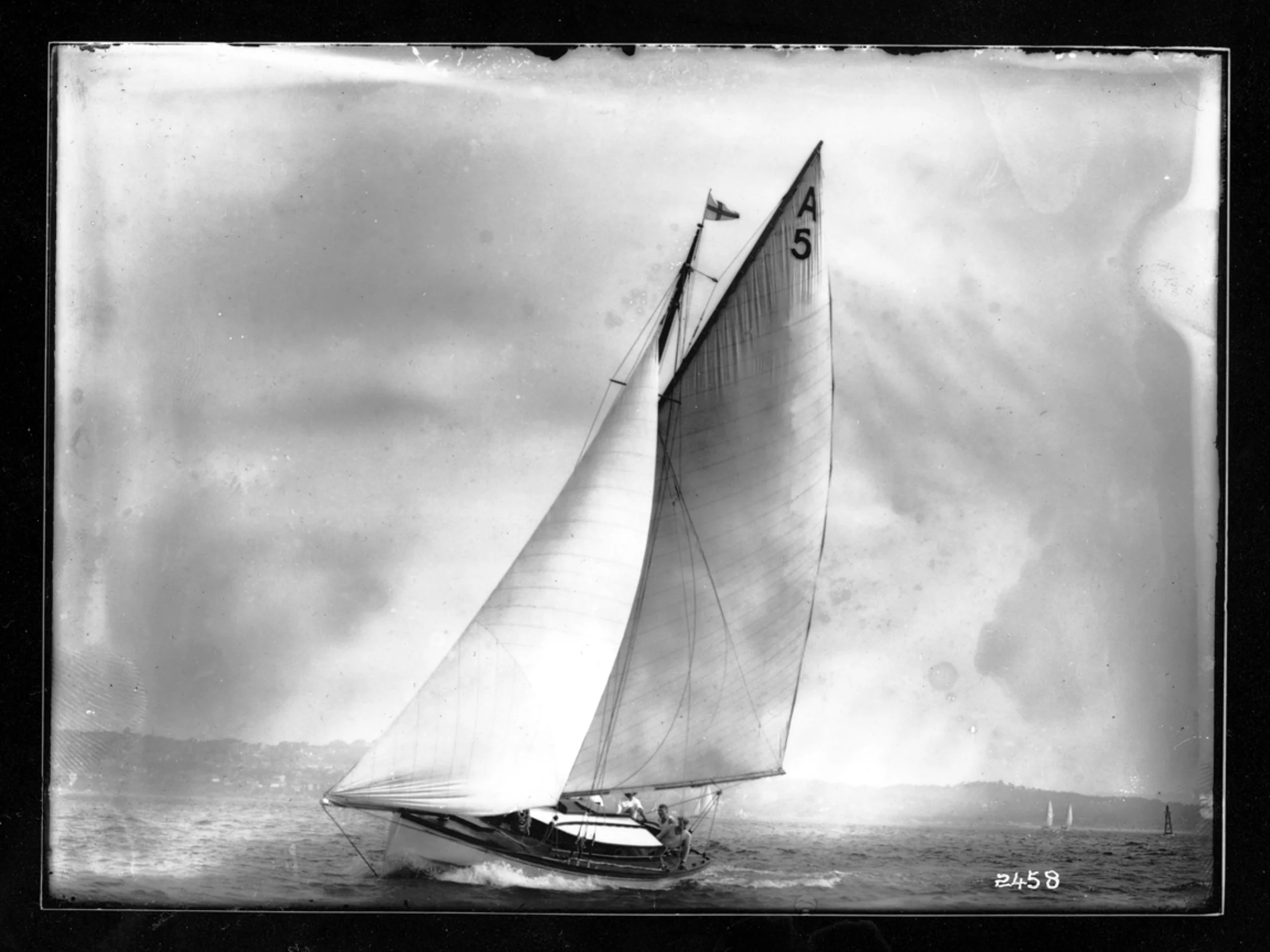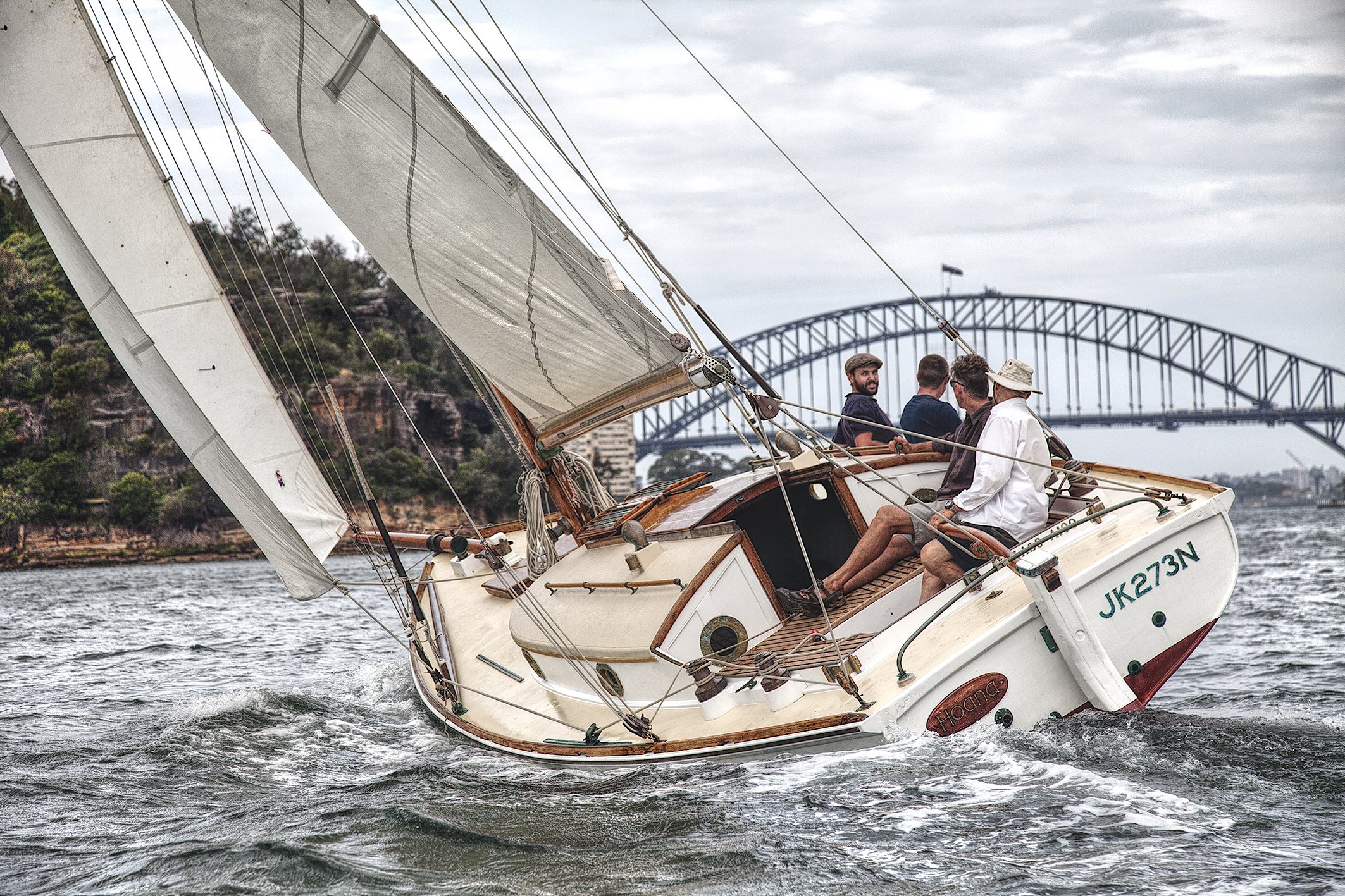Hoana - Past, Present, Future.
This article by Martin van der Wal, is based on a talk given at the recent Classic Conference held at the SASC. We hope to bring you a report on the whole event in the next few weeks.
HOANA on Sydney Harbour -Image Andrea Francolini
At the recent Classics Conference held at the Club, I was asked to answer a couple of questions. Why do younger crews enjoy yachts like Hoana? And what are my plans for Hoana’s future custody, including a brief reprise of her heritage status as a Sydney or Australian icon?
Over the past 38 years of racing, I've had a continuous stream of younger crew learn how to sail or refine their skills on Hoana. I was twenty years old before someone gave me the chance to learn, and I have never forgotten how grateful I was and how life-changing the experience was. This has always motivated me to do the same for others. The demographic of Classic boat ownership is steadily trending towards extinction. Who will step in from the younger generations, why would they? Answers from the younger people involved in racing Hoana are worth repeating. One pointed out that people born into the CNC Nineties feel starved of the pleasure of human craftsmanship traditions taken for granted by the Boomers; what better exemplar than a plank on frame wooden boat? Also mentioned by another was how a Classic boat can serve as a lens through which to view local and global history. Another crew member noted how it felt like being on a ship, not a toy when sailing Hoana. All mentioned the agreeable sense of belonging to a community passionate about both heritage and sailing. The ecological, sustainable and potential long life expectancy of wooden boats hold a special significance for the younger people in this community. The global statistics tell us that between 35 and 40 million fibreglass craft are now reaching the end of their useful life. The lack of a cost-effective means of disposal will inevitably result in a tsunami of microplastics and phthalates into the food chain.
The second part asks what Hoana’s future might be as and when the Zimmer frame looms on my horizon and why it might be important to ensure her survival. Although I’ve been asked to speak specifically about Hoana, my words can generally apply to any Classic yacht. Peter mentioned the word icon in the introduction, a word with religious connotations. Let’s face it: those of us in this room belong to a religion, a cult, if you like. It’s not a blessing of the fleet kind of religion; it's a nature-worshipping religion, a pagan religion, a mystery cult. The deepest mystery of all - is, of course - where does all the money go? Yes - our totems do demand the occasional sacrifice of the fatted wallet. But what do they offer in return?
They transport us back in time to a lineage of purposeful human craftsmanship, an ancient continuum whose organic spirit feeds our souls as we drop the mooring and escape the mundanities of our increasingly artificial world. Besides the pleasure we get from their use, our vessels are reliquaries of stories. Decades of stories, from the story of the tree growing in the forest to that of the person who cut it down. Stories in the craft of fabrication, in the historical forces that shaped them and those they’ve lived through. Stories in the miles of water that have passed under their keels - the winds that have propelled them - the landfalls made - races won and lost.
HOANA- From the Hall Collection
Hoana’s story is well known. In 1925, she was launched with the express purpose of competing in what was then one of the largest racing fleets on Sydney Harbour, the Sydney Amateurs Cruiser Class. Ninety-nine years later, she’s still competing; Spring, Summer and Winter under the Amateurs flag. David Payne and Tim Phillips describe her as a typical Sydney Harbour Cruiser Class yacht. Her particular style is a local adaption of the Couta boat type developed for the Bass Straight fisheries.
In the late Sixties, she interrupted her Harbour racing and, with Joe and Anne Adams at the helm, took her working boat DNA on a world circumnavigation. By the time they returned, having outrun Somali pirates and weathered a ninety-knot Pacific Cyclone, Hoana was already nearly fifty years old. She’s probably the only Australian Couta boat type to have girdled the globe on her own bottom. Joe summed up his eighteen-year association with Hoana by flatly stating, “There should be more like her!” In communications I exchanged with him until his untimely death, he told me that a bit of Hoana resides in all his designs. Her survival is important simply because when you touch the object, you touch the story, ask any archaeologist.
Our religion also holds elements of Ancestor Worship. Our gods offer us a kind of afterlife as our stories join the manifest of those who have gone before, who've held the same helm, heard that unique melody, and felt the rail dip as she surged forward. When my turn comes, I'd like to slip out the backdoor of a partnership with someone I could assist in getting to know her. Failing that, I hope she finds a new custodian who understands that you can keep a vessel well-found without over-restoration; this can be worse than under-restoration. Once visible traces of age are lost, the history and charm they hold are lost forever.
Hopefully, I'll find someone who keeps muttering my mantra of long years of ownership. Keep her going, keep her going, come what may; week in, week out. Doing what she was built for. Doing what she palpably loves doing. Racing on the best harbour in the world under the Amateurs flag.
Martin van der Wal
09/10/24
HOANA and harbour bridge-Image by Elisa Krey



